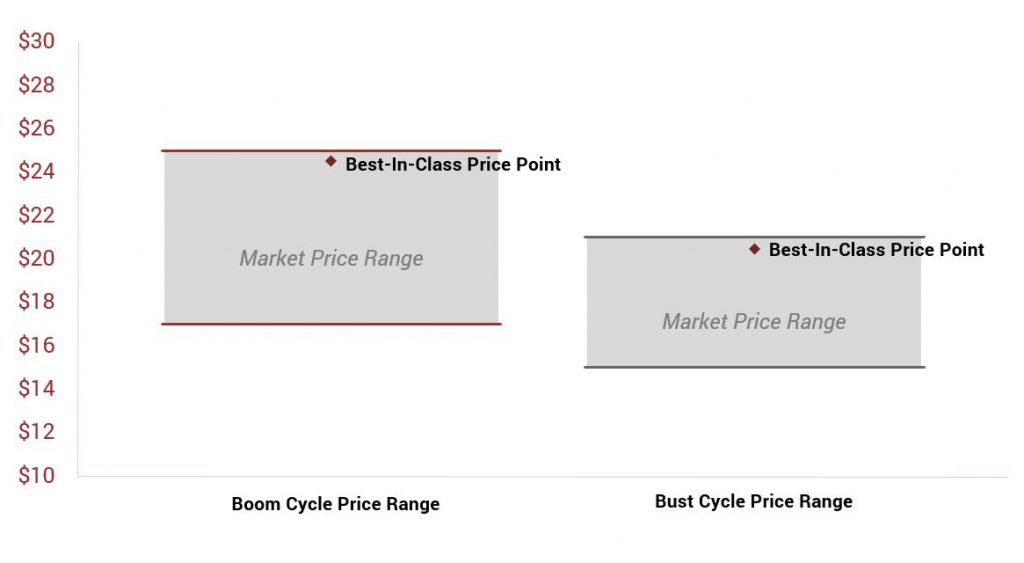Hello pricing nation! I’ve missed you all. I apologize for my blog hiatus. I’ve been busy with my kids and my clients, and while my brain is chock-full of blog ideas, I hadn’t sat down to commit them to print. So many great content ideas, and so little time. But I am on top of it now! Here goes blog post #1 of 2016!
As I teach in my workshops, when you are best-in-class or better-in-class in your industry, you can charge more than your competition. If you deliver excellence, if you deliver value in excess of your competition, why do you feel that your pricing needs to be in line with that competition to win business? Typically, that sort of pricing approach is a fear-based response. Charge at the top of the range! (Just to clarify, I never argue with reality. I do not argue that you can price above the realistic range just because you are exceptional. You can bake the world’s best gluten-free raisin bread, but that doesn’t mean you can charge $100 per loaf.)
An audience member asked me today if this concept applies in a recession as well as a boom in the economy and whether strategic price principles still apply in both scenarios. The answer: a resounding yes to both questions. Let me explain using an example of a B2B product (though the principle applies equally in service businesses):
- Pricing during a boom cycle for this product ranges between $17-25 per unit in the marketplace. If you are best-in-class, you can be at the top of that range because you deliver better quality, service, and value.
- During a recession, many markets shrink in size, which can create downward price pressure as many competitors compete for fewer opportunities. In addition, the market price range itself is often compressed. The range could be $15 – $21 ($6 range vs. $8 range in boom cycle. See figure below.) However, best-in-class companies can still earn a price premium relative to the market price, even though the price is lower than the boom price.

Value differentiators become ever more critical in economic downturns. In these highly competitive market conditions, effective strategic price management is essential. Namely:
- Applying the principles of variable price sensitivity and segmentation principles to price surgically in order to optimize profitability without sales volume loss
- Relentlessly focusing on value-based pricing and value selling
A final word on this topic: the great recession is over, people. Those of you who haven’t raised prices in seven years because, jeez, you could lose a lot of customers… You are still operating in the paradigm of the recession (fear response). It is time to gain confidence to charge what your products and services are really worth. If you aren’t sure if that’s true or you aren’t sure how to do that, contact us. We can help.
